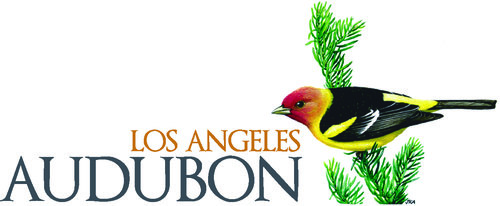September and October are a time of almost endless potential and anticipation in the birder’s world in southern California, with a wide variety of migrants passing through. But it is also a time of uncertainly; each year is different and we never know exactly what to expect. What numbers of vagrants will turn up? What species will be above or below average? Will any ultra-rare Asian strays be found? To avoid any unnecessary suspense, I will state that the fall of 2022 did not disappoint.
Birds of the Season- August 2022
In some respects, July represents the summer doldrums for birds and birding. Breeding activity is largely over and fall migration has yet to get into full swing. But nothing is static in the bird world. Shorebird migration was already well underway, and the first southbound passerines were not far behind. Though much of what migration has served up thus far has been standard fare, a handful of vagrants have already been recorded.
Birds of the Season — June 2022
As spring rushed toward summer, birders made the most of their time finding migrants both regular and rare. By early June the show was all but over, with only a few stragglers still passing through. Following a dismal vagrant season last spring, there were hopes for a more exciting 2022. Indeed, this year saw marked improvement with a rather satisfying- if not overwhelming- number of good birds found in the county.
Birds of the Season- April 2022
Photo: Lewis's Woodpecker (melanerpes lewis), © Ian Routley, Courtesy of Macaulay Library
Birders are used to many types of change. Migration, increasing and decreasing bird populations, loss and gain of habitat, and varying access to favored birding locations are all familiar ones. Climate change adds an element that is transforming the distribution and habitats of birds, with the effects becoming more apparent every year.
Birds of the Season- February 2022
Photo: Lewis's Woodpecker (melanerpes lewis), © Ian Routley, Courtesy of Macaulay Library
Birders are used to many types of change. Migration, increasing and decreasing bird populations, loss and gain of habitat, and varying access to favored birding locations are all familiar ones. Climate change adds an element that is transforming the distribution and habitats of birds, with the effects becoming more apparent every year.
Birds of the Season — December 2021
Birds of the Season — October 2021
Fall is the most exciting and most anticipated time of year for birders in southern California. Still, some years are better than others. Did this year live up to expectations, fall short, or exceed them? Now at the end of October, it’s easy to make the case that it exceeded them.
If the spring of 2021 was defined by a near complete lack of vagrants, the fall was defined by a complete reversal of those fortunes. To call it epic isn’t much of an exaggeration. Though there were few super rarities, unusual birds were discovered almost daily, with multiples of most expected eastern warblers and a variety of others represented in the mix.
A handful of early fall arrivals were recorded as were a number of late southbound migrants. It’s inevitable that as the intensity of birding in the county increases, the more rarities and early and late records will be documented. Naturally, weather, climate change and year to year variation in movements, breeding success and distribution play a role as well. Regardless, the number of vagrants found is represented by an upward curve.
While the deserts of Los Angeles County were hot as always, summer on the coastal slope was rather mild. Wildfires- devastating for parts of central and northern California- had a very modest impact locally. A good thing, since we could all use a respite after the ugly fire season of 2020 and the woes of the ongoing pandemic.
In 2021, with La Niña conditions having developed and expected to remain in place, the odds for a drier than normal winter are higher. Hope lies in the fact that this is not certainty. An exceptionally long drought capped by the remarkably dry winter of 2020-2021 leaves us hoping for at least average precipitation this winter. Aside from providing water for agriculture and every other human need, bird habitats would benefit significantly.
Let’s take a look at the greater and lesser birds of note from September and October…
Birds of the Season — August 2021
Birds of the Season — June 2021
Birds of the Season–April 2021
With the onset of spring, rainfall remained sparse, though this was hardly unexpected. With precipitation at about twenty-five percent of normal, we are now past any chance to make up the deficit. Much of the western United States is in the same situation, or worse. Thankfully, plants and animals are fairly well-adapted to deal with these conditions- at least in the short term. Humans, with their voracious appetite for water, are less so.







